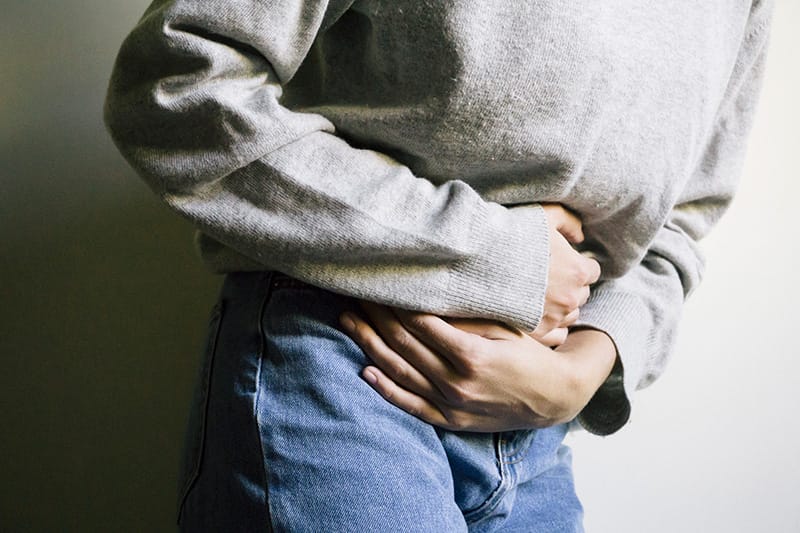The cramps and symptoms of the menstrual cycle differ from woman to woman. For some women, their period comes with few adverse effects. For others, it leaves them curled up on the couch in horrible pain.
In the latter group, a couple of ibuprofen tablets may not be enough to get through another month. And each month, the pain can get progressively worse or even start popping up between periods. But chronic pain is not part of a "normal" period, even if it's quite normal for women to experience it.
Chronic period pain is the number one symptom of endometriosis.
When the pain becomes too much, it's time to get some answers, says Nicole Meyer, PA-C.
"Chronic pain, particularly during your periods, is the number one symptom of endometriosis. The vast majority of the pain, especially in the first few years, is period pain," she says. "Heavy, horrible periods lead to a lot of cramping. And over time, the blood comes up out the fallopian tubes from years of heavy periods."
When blood spills out of the tubes, it can cause a lot more pain than a normal period. Within the blood, there are little pieces of endometrium, the lining inside your uterus that builds up each month to support a pregnancy. When these pieces get out of the fallopian tubes, they implant themselves all over the outside of the uterus and ovaries.
"Every month when your hormones say it's time to have a period, all the little pieces of endometrium inside and outside the uterus hurt horribly," Meyer says. "If it goes unchecked, it starts scarring up your reproductive organs, creating blockages and making it hard to get pregnant."
Heavy periods are the most likely cause.
"We don't know what causes endometriosis but part of it has to do with heavy periods that make the blood spill out of the tubes the wrong way," Meyer says.
Surprisingly, that happens to 90 percent of women. Instead of flowing out of the body like a normal period, menstrual blood with endometrial cells flows back through the fallopian tubes and into the pelvic cavity. Yet only 10 percent of women develop endometriosis — a much lower percentage, but still a surprisingly high number.
"Why does this happen to one woman and not the next? There are other mechanisms at play, and we don't know them," Meyer says. "There's a lot of research going on right now and we think it's partly genetic."
Surgery is the only way to diagnose endometriosis.
Pelvic exams, ultrasounds and MRIs can be used to check for large cysts or scars from endometriosis. But the only sure way to diagnose the condition is through exploratory surgery.
"Endometriosis is really hard to diagnose. You have to have exploratory surgery so the surgeon can see the scarring," Meyer says.
Endometriosis is known as an invisible illness, but it leaves visible scars — bright, purple ones, actually. So when a surgeon gets a look inside the pelvis, they can clearly see the endometrium attached to the outside of the uterus, ovaries and fallopian tubes. The only way to do that and get a diagnosis with certainty is through a minimally invasive laparoscopic surgery.
A hysterectomy is not a common treatment but a last resort.
Surgery is the way to get an endometriosis diagnosis. It's not the only way get out of one.
"A hysterectomy would actually be a last resort. It's usually unnecessary. Usually, we can find some sort of solution to suppress your period that almost always works," Meyer says.
Your hormones get going every month during your menstrual cycle, activating the endometrium to detach and release as a period when there's no pregnancy. They're also activating every little piece of endometrium elsewhere in your pelvis. Stop the hormones, stop the pain.
"The first thing we do is suppress your estrogen. We want to stop that lining from building up and stop all those little pieces of endometrium from activating and causing pain," Meyer says. "Birth control methods like pills, IUDs (intrauterine devices) and Depo-Provera® shots help control it. There are also some medicines that suppress estrogen to turn off periods for a while so that all the little pieces of endometrium go dormant."
Birth control prevents ovulation. If you don't ovulate, the endometrial implants don't build up as much and endometriosis is less painful. The other hormone-suppressing medications work in a similar way. Additional pain management treatments are sometimes necessary, but the real key is finding the right method and to keep the hormones suppressed.
Yes, you can still have children!
Endometriosis is the third-leading cause of infertility, which rightfully scares any woman who has a desire to have children. The endometrium can block the tubes to make it harder for sperm to find the egg or build up enough to change the shape of the reproductive organs. That can make it harder to get pregnant, but most women are still able to conceive normally.
Traditional treatment methods suppress your hormones and periods, which isn't possible if you're trying to have kids. Talk to your doctor about your plans for pregnancy when you are diagnosed with endometriosis for a treatment plan tailored to you.
"We don't know exactly when endometriosis starts. Treating it earlier is always better," Meyer says. "As soon as you start developing heavy, horrible periods — through your teens and twenties — you need to come in and talk about it right away. To preserve your childbearing years, you want to keep those heavy, horrible and painful periods controlled and not allow them to go unchecked for years."
.jpg)

